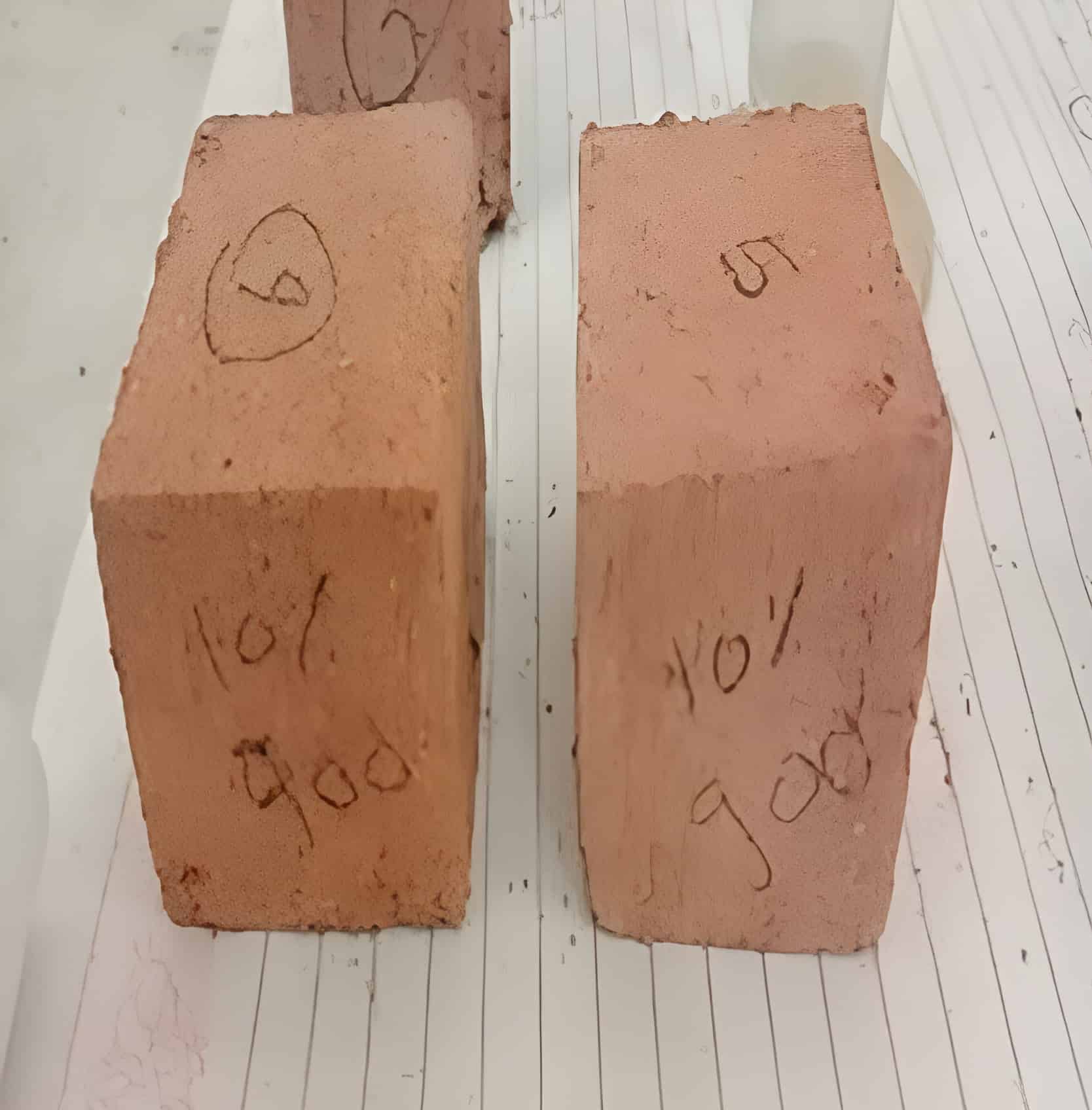
In a ground-breaking study, scientists have discovered the potential of spent mushroom materials to revolutionize the brick industry. Spent Mushroom Materials (SMM) are the byproducts or waste generated from the cultivation and harvesting of mushrooms. It includes the substrate or growing medium used to support mushroom growth, as well as the spent mushroom blocks or spent compost after the mushrooms have been harvested.
In the study, SMM is used as a thermal insulator in fabricating lightweight bricks, with up to 15% replacement proportions leading to decreased thermal conductivity and bulk density. As the SMM content increases, so does the number and size of micropores in the bricks, according to an SEM analysis. This results in decreased CO2 emissions and energy consumption, with bricks containing 15% SMM demonstrating the highest thermal efficiency. Despite decreased compressive strength with increased SMM, the lowest recorded strength is still sufficient for ordinary construction needs.
- Waste from mushroom production, known as Spent Mushroom Materials (SMM), can be utilized as a resource for brick production.
- Incorporating a portion of SMM into bricks enhances their thermal properties and contributes to better use of resources.
Unearthing the potential of SMM
So, what makes SMM so special? The answer lies in its organic makeup. SMM contains organic matter that decomposes during the brick-firing process. This decomposition creates pores within the bricks, significantly reducing their thermal conductivity. The more SMM is incorporated, the lower the thermal conductivity, meaning heat transmits less readily through the material. This property is particularly valuable when it comes to energy efficiency in buildings.
The researchers’ findings provide a new perspective on how we approach construction materials. The incorporation of SMM in the fabrication of bricks results in a decrease of both the bulk density and compressive strength. Yet, even with increased SMM content, the bricks’ compressive strength remains within acceptable standards for load-bearing blocks in ordinary constructions, complying with ASTM C62 standards.
Environmental impact
The environmental implications are equally impressive. As the SMM content increases, the CO2 emissions and energy consumption decrease, particularly in bricks containing 15% SMM. This is a significant step towards reducing the carbon footprint of the brick industry. The reduction in energy consumption also indicates that SMM-incorporated bricks could contribute to energy efficiency in the broader construction sector.
Under a Scanning Electron Microscope (SEM), the effects of SMM incorporation become even clearer. The SEM analysis reveals an increase in the number and size of micropores within the bricks as the SMM content rises. These micropores are critical in the bricks’ thermal insulation properties, further contributing to their energy efficiency.
This method’s potential for large-scale application or commercialization is yet to be fully realized. But with the promising results from this study, it’s clear that the waste of the humble mushroom could play a significant role in the future of sustainable construction.

